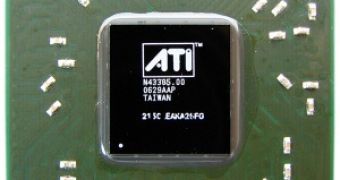The graphics cards segment is one of the most dynamic places of the entire computer hardware manufacturing business. While there are many graphics cards producers (some very good, most simply good, and a few that don't even deserve to be called producers at all), there is only a handful of graphics chips manufacturers - Nvidia, ATI and SiS, not counting here the more exotic producers like Matrox or the "video in chipset" ones like Intel and VIA. Every now and then a new graphics processor is launched by one of these producers and most of the time they introduce some new and unheard of technology that should increase performance and image quality. We'll talk in this article about ATI's Hypermemory and CrossFire and about Nvidia'a SLI and Turbocache. Hypermemory is a technology used by ATI since the first graphics cards from the Radeon X family, cards based on the PCI Express bus. It is in fact an advanced memory management technology that allows graphical applications to share part of the system memory and use fast on-board memory for real-time processing between the video card and the computer's main memory. Because of this product, this technology will increase overall computer performance even in non-graphics intensive applications. Digital photo editing, internet browsing, 3D gaming (DirectX 9.0 support is included at hardware level in all newer Radeon cards), and office applications are enhanced with higher monitor resolutions, vibrant image quality, and higher performance.
What Hypermemory is to ATI cards, Turbocache is to Nvidia based ones. The Turbocache technology is available in low end desktop PC video cards as well as in thin and light notebook PCs. Turbocache is not implemented in all Nvidia based graphics cards, as higher end models use a more advanced memory management feature. Nvidia implemented Turbocache in the following graphical chips the Nvidia GeForce Go 7300 GPU for PCI Express thin and light notebook PCs, the Nvidia GeForce 6200 GPU for PCI Express desktop PCs, and the Nvidia GeForce Go 6200 GPU for PCI Express notebook PCs. Because of the Turbocache technology involved, these GPUs support up to 128MB or 256MB video memory configurations and DirectX 9.0c Shader Model 3.0.
Nvidia Scalable Link Interface (SLI for short) is a brand name for a multi-graphics processing units solution developed by Nvidia for linking two (up to four now) video cards together to produce a single video output. SLI is processing data in parallel and it is meant as a way to increase general graphical performance. The very basic idea of SLI is to allow two or more GPUs to share the workload while rendering a single 3D scene. Because of a connector (the SLI bridge), the cards communicate without slowing down or using some of the system's resources. SLI uses two rendering and one antialiasing method in order to split the work load: Split Frame Rendering (this uses both cards to render a single image), Alternate Frame Rendering (every card gets a separate image to render) and SLI Antialiasing.
CrossFire is the name of the ATI solution for multi-GPU systems, which competes with Nvidia's SLI. The system needs a CrossFire compliant motherboard and a pair or more of PCI Express ATI cards. CrossFire can be enabled either hardware or software and it supports a variety of technologies: SuperTiling (ATI's dual GPU rendering mode), Scissors, Alternate Frame Rendering and CrossFire Super AA.

 14 DAY TRIAL //
14 DAY TRIAL //